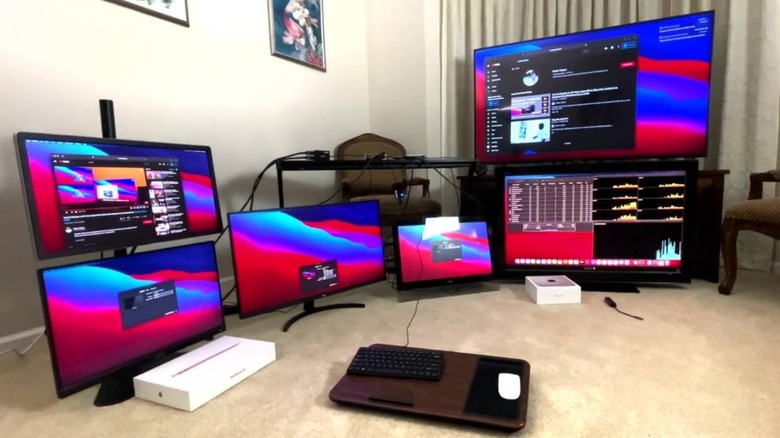M1 Macs Can Run Up To Six Displays With A Workaround
Apple's new generation of M1-powered Macs has definitely been the hot thing in computing these past weeks. They have been proving Apple's claims of performance, giving Intel a lot to worry about. The one drawback to these new Mac minis and MacBooks is that they support one less external monitor than their Intel predecessors, at least on paper. It turns out that they can actually support twice as many but you will have to get some accessories and install some software to make it happen.
As always, the number of displays you can connect to these Macs isn't straightforward and depends on the resolution of the monitors being connected. The Intel Mac mini, for example, can combine either three 4K monitors or one 5K and one 4K monitors. The M1 Mac mini, in contrast, can connect only one 6K monitor and one 4K screen via two different ports.
YouTuber Ruslan Tulupov, however, discovered that the M1 Macs can support more than Apple's advertised combinations. The M1 Mac mini can have as many as 6 monitors attached to it while the M1 MacBook Air and M1 MacBook Pro could connect 5 external displays (also for a total of six, counting the built-in screen). Again, the total still depends on the screen resolutions being used.
Tulupov, fortunately, shares the secret to his magic tricks, which pretty much involves using DisplayLink adapters to connect HDMI monitors via the Macs' USB-C ports. These adapters also need to have their Mac drivers installed and, as luck would have it, they already work on macOS Big Sur. A DisplayPort hub will also be necessary when you run out of ports in order to reach that screen count.
What is perhaps more impressive is that the Apple M1 CPU seems to handle all the added hardware quite well. Frame drops are noted to be few, which is quite impressive given all of these are being driven by an ARM-based SoC. Definitely another one to add to the M1's growing prestige.
